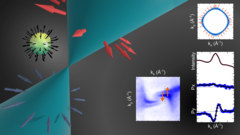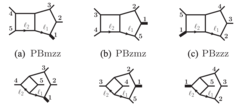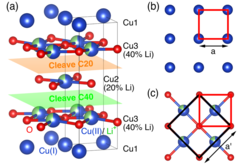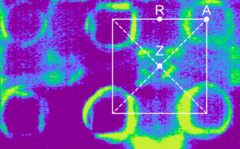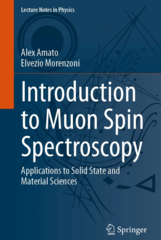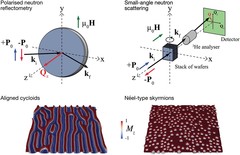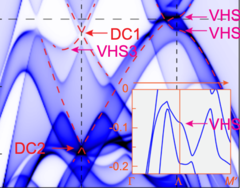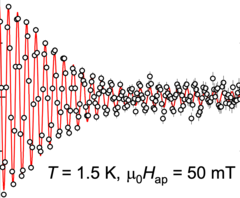NUM division - Publication Highlights
Weyl spin-momentum locking in a chiral topological semimetal
Spin–orbit coupling in noncentrosymmetric crystals leads to spin–momentum locking – a directional relationship between an electron’s spin angular momentum and its linear momentum. Isotropic orthogonal Rashba spin–momentum locking has been studied for decades, while its counterpart, isotropic parallel Weyl spin–momentum locking has remained elusive in experiments. Theory predicts ...
Surface oxidation/spin state determines oxygen evolution reaction activity of cobalt-based catalysts in acidic environment
Co-based catalysts are promising candidates to replace Ir/Ru-based oxides for oxygen evolution reaction (OER) catalysis in an acidic environment. However, both the reaction mechanism and the active species under acidic conditions remain unclear. In this study, by combining surface-sensitive soft X-ray absorption spectroscopy characterization with electrochemical analysis, we discover that the acidic OER activity of Co-based catalysts are determined by their surface oxidation/spin state.
All Two-Loop Feynman Integrals for Five-Point One-Mass Scattering
We compute the complete set of two-loop master integrals for the scattering of four massless particles and a massive one. Our results are ready for phenomenological applications, removing a major obstacle to the computation of complete next-to-next-to-leading order QCD corrections to processes such as the production of a H/Z/W boson in association with two jets at the LHC. Furthermore ...
Electron Glass Phase with Resilient Zhang-Rice Singlets in LiCu3O3
LiCu3O3 is an antiferromagnetic mixed valence cuprate where trilayers of edge-sharing Cu(II)O (3d9) are sandwiched in between planes of Cu(I) (3d10) ions, with Li stochastically substituting Cu(II). Angle-resolved photoemission spectroscopy (ARPES) and density functional theory reveal two insulating electronic subsystems that are segregated in spite of sharing common oxygen atoms: a Cu dz2/O pz derived valence band (VB) dispersing on the Cu(I) plane, and a Cu 3dx2−y2/O 2px,y derived Zhang-Rice singlet (ZRS) band dispersing on the Cu(II)O planes.
Flat-band hybridization between f and d states near the Fermi energy of SmCoIn5
We present high-quality angle-resolved photoemission (ARPES) and density functional theory calculations (DFT+U) of SmCoIn5. We find broad agreement with previously published studies of LaCoIn5 and CeCoIn5, confirming that the Sm 4f electrons are mostly localized. Nevertheless, our model is consistent with an additional delocalized Sm component, stemming from hybridization between the 4f electrons and the metallic bands at “hot spot” positions in the Brillouin zone.
Introduction to Muon Spin Spectroscopy
Alex Amato and Elvezio Morenzoni (both NUM) have published a new textbook entitled 'Introduction to Muon Spin Spectroscopy: Applications to Solid State and Material Sciences'. The book is ideal for a first course in muon spin spectroscopy (µSR), comes enriched with exercises and solutions to master the subject and includes practical examples to quantify key experimental parameters.
Observation by SANS and PNR of pure Néel-type domain wall profiles and skyrmion suppression below room temperature in magnetic [Pt/CoFeB/Ru]10 multilayers
The study presents a unique investigation of [Pt/CoFeB/Ru]10 multilayers, revealing suppressed skyrmion phases, intricate magnetic domain structures, and Néel-type domain walls, providing crucial insights for spintronic applications.
Phonon promoted charge density wave in topological kagome metal ScV6Sn6
Charge density wave (CDW) orders in vanadium-based kagome metals have recently received tremendous attention, yet their origin remains a topic of debate. The discovery of ScV6Sn6, a bilayer kagome metal featuring an intriguing √3 × √3 × √3 CDW order, offers a novel platform to explore the underlying mechanism behind the unconventional CDW. Here we combine ...
Tuning of the flat band and its impact on superconductivity in Mo5Si3−xPx
The superconductivity in systems containing dispersionless (flat) bands is seemingly paradoxical, as traditional Bardeen-Cooper-Schrieffer theory requires an infinite enhancement of the carrier masses. However, the combination of flat and steep (dispersive) bands within the multiple band scenario might boost superconducting responses, potentially explaining high-temperature superconductivity in cuprates and metal hydrides. Here, we report ...
